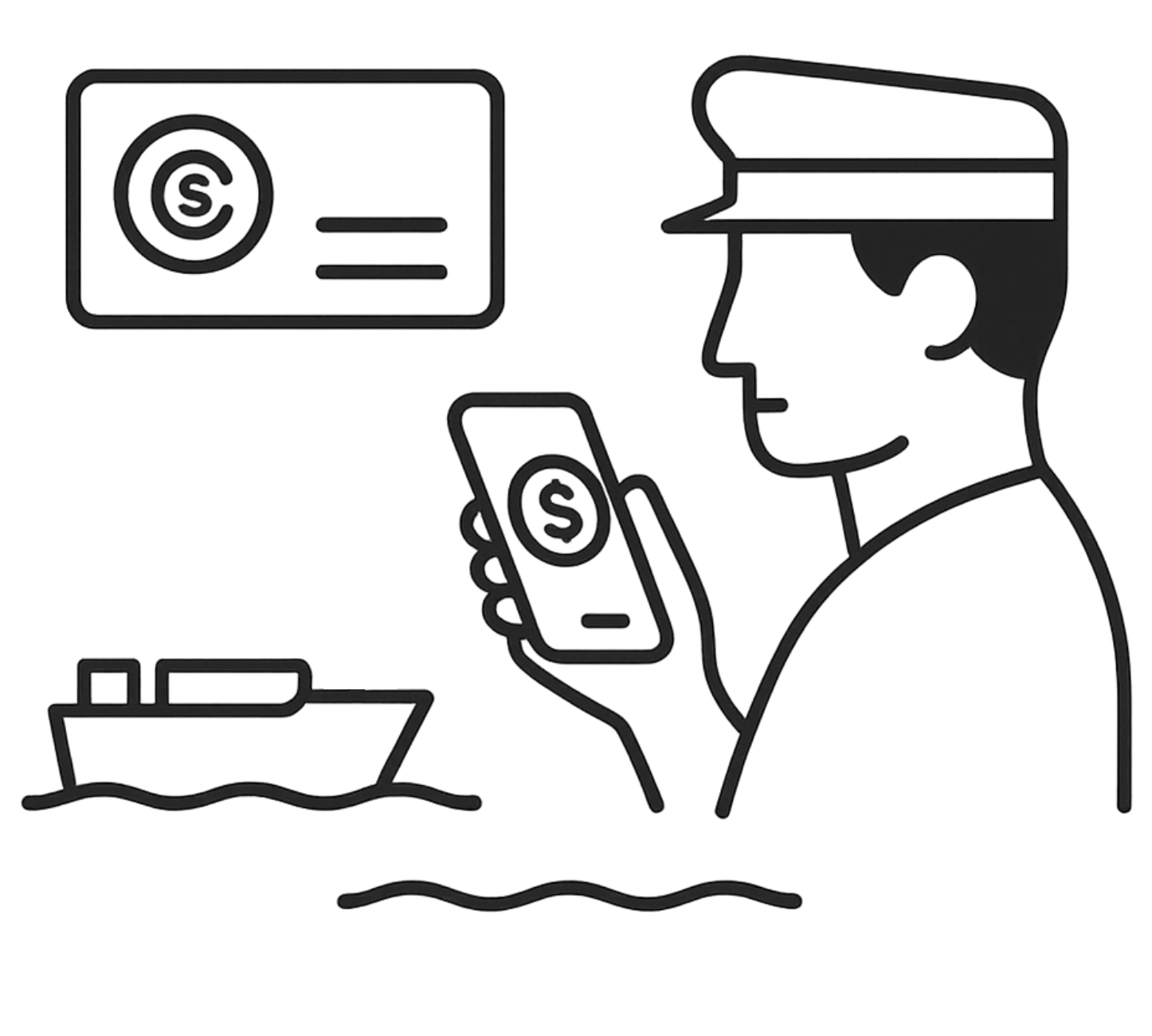Use Case: Stablecoin Payroll at Sea — Instant, Low-Cost Salaries for Seafarers
Paying seafarer wages is notoriously complex, costly and slow. Traditional conventional payroll depends heavily on wire transfers, cash advances, correspondent banks and physical port visits—introducing substantial delays, costs and even security risks. Now, stablecoins are transforming the process, providing instant payroll solutions.
The Pain Points: High Fees, Delays, and Security Risks
Currently, seafarer conventional payroll suffers from several critical issues:
High fees and FX spreads: Wire transfers and cash advances incur significant fees, reducing the crew’s net salaries.
Dependence on port calls: Payments often rely on physical port arrivals, causing weeks-long delays.
Cash handling and security risks: Handling onboard cash creates theft and insurance risks, plus logistical complexities.
These outdated payroll practices negatively impact crew satisfaction, retention and operational efficiency.
The Stablecoin Payroll Solution
While nupont focuses on regulated enterprise use cases and ERP integrations in the EU and DACH region, other companies have announced initiatives in stablecoin payroll, particularly targeting remote workers and Web3-native organizations:
In June 2025, Rain and Toku announced the rollout of a global stablecoin payroll solution. According to their statements, the platform supports USDC, RLUSD, and USDG across many countries, with integrations into payroll systems like ADP and Workday.
Zebec Network claims to offer streaming crypto payroll via smart contracts on the Solana blockchain. Their service is marketed toward DAOs and Web3-native teams, using stablecoins such as USDC and USDY for real-time salary disbursement.
These developments reflect increasing market activity and innovation in stablecoin payroll—particularly outside traditional enterprise contexts.
Seafarer using his mobile phone as a wallet for stablecoin based payroll
Maritime enterprises are increasingly considering stablecoin-based payroll solutions—such as established stablecoins (e.g., USDC, EURC) currently regulated as e-money tokens in Europe, or newly introduced stablecoins like EURAU, explicitly licensed under the EU’s MiCAR regulation—to enable instant stablecoin salaries directly to seafarers’ digital wallets. These solutions significantly streamline conventional payroll by reducing dependency on conventional payment rails.
Instant monthly payroll disbursement: Companies directly transfer wages in stablecoins from ERP systems to crew digital wallets within seconds, at very low fees.
Spend-anywhere stablecoin-backed debit cards: Crew members can use web3 debit cards (e.g., Gnosis Pay via Visa, or MetaMask Mastercard) to convert stablecoins instantly into local currency at ATMs or merchants worldwide.
Remittance flexibility: Seafarers easily send wages instantly to family members abroad via stablecoins, significantly reducing remittance fees and delays.
Real-Life Scenario: Germany to Argentina—and Beyond
Consider a German shipping company paying its crew globally, including a seafarer based in Argentina:
Instant cross-border payroll: The company sends wages directly in stablecoins (e.g., EURAU when available, USDC or EURC currently) from Germany to the crew member’s digital wallet in Argentina.
Local spending & remittances: A portion of the received stablecoins is instantly converted into local currency, such as Argentine Pesos (ARS), using a stablecoin-enabled debit card for shopping or ATM withdrawals. In parallel, part of the salary is sent home to family — for example, in Southeast Asia — significantly faster and at lower cost compared to traditional remittance services.
Business Value Delivered
Switching to stablecoin payroll brings clear financial and operational benefits:
| Benefit | Impact |
|---|---|
| Payroll cost reduction | ↓ Up to 90% compared to traditional payroll methods |
| Elimination of cash logistics | Lower security, theft, and insurance risks |
| Instant salary payments | Increased crew satisfaction & retention |
| Transparent wage records | Simplified MLC 2006 compliance & audits |
Borderless Payments, Better Crew Welfare
This model doesn’t just reduce costs—it fundamentally improves crew welfare. Seafarers gain immediate access to earnings, greater financial flexibility and significant savings on international remittances. Maritime companies enjoy more secure payroll management, reduced operational costs and happier crews.
This blogpost is part of our series “Real Business. Real Impact.” A Deep Dive into Enterprise Use Cases for Stablecoins
✅ Cross-Border Supplier Payments
✅ Crew Payroll at Sea
🔜 Loyalty with Stablecoins
🔜 FX Hedging
🔜 Bunker Fuel Escrow
If you want to be notified of new releases, please subscribe to our newsletter below.

